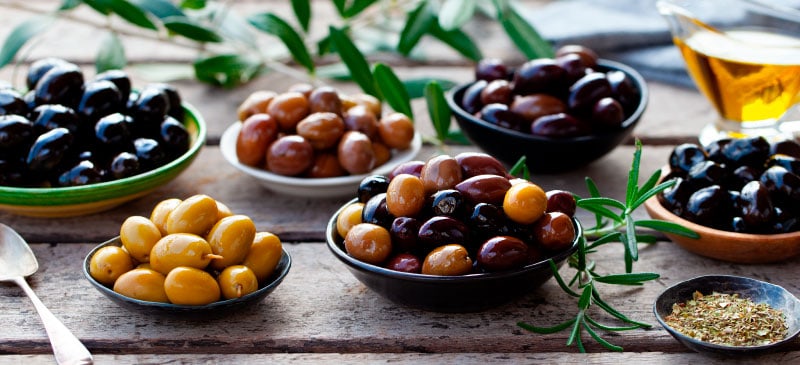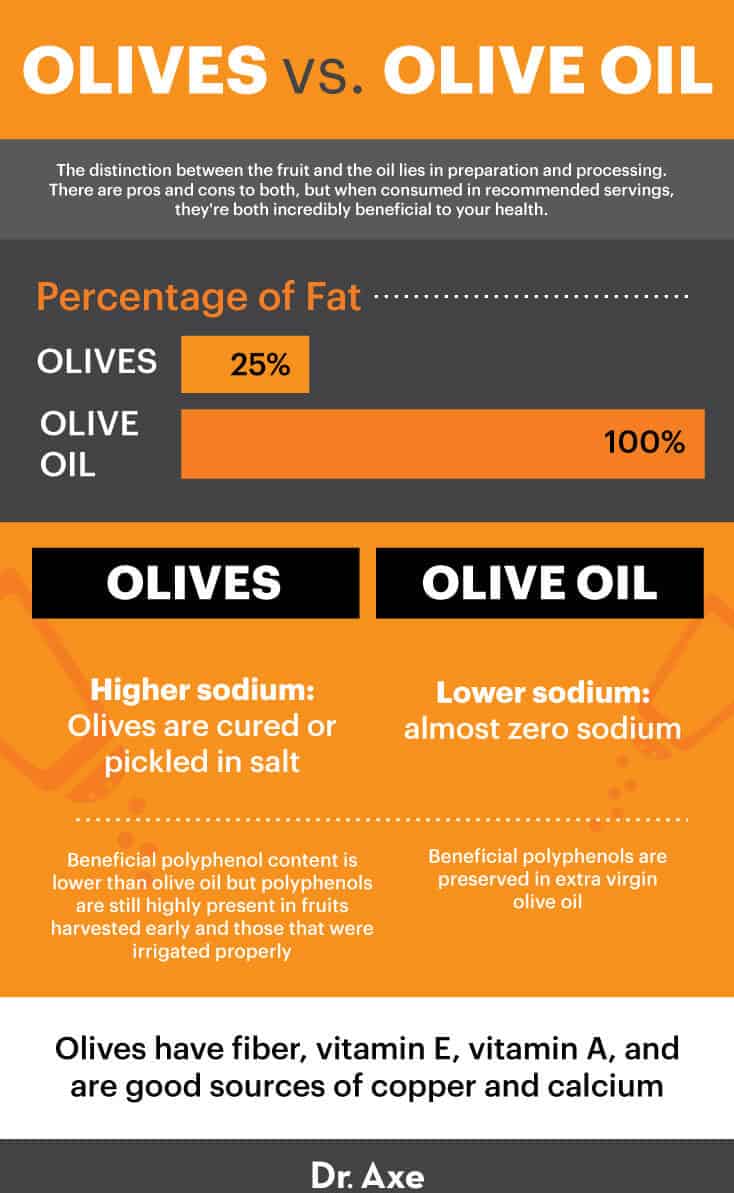This Dr. Axe content is medically reviewed or fact checked to ensure factually accurate information.
With strict editorial sourcing guidelines, we only link to academic research institutions, reputable media sites and, when research is available, medically peer-reviewed studies. Note that the numbers in parentheses (1, 2, etc.) are clickable links to these studies.
The information in our articles is NOT intended to replace a one-on-one relationship with a qualified health care professional and is not intended as medical advice.
This article is based on scientific evidence, written by experts and fact checked by our trained editorial staff. Note that the numbers in parentheses (1, 2, etc.) are clickable links to medically peer-reviewed studies.
Our team includes licensed nutritionists and dietitians, certified health education specialists, as well as certified strength and conditioning specialists, personal trainers and corrective exercise specialists. Our team aims to be not only thorough with its research, but also objective and unbiased.
The information in our articles is NOT intended to replace a one-on-one relationship with a qualified health care professional and is not intended as medical advice.
Olives Nutrition Facts & Benefits: Combat Cancer, Heart Disease and Diabetes
June 15, 2023

The olive might be small, but did you know that olives nutrition packs quite a healthy punch? It’s true.
Known mostly for making versatile, benefit-rich olive oil, olives are bursting with rich phytonutrients and known for their high vitamin E content, cancer-fighting antioxidants and cardiovascular benefits — but that’s not all.
What else does olives nutrition provide? Let’s take a look.
What Are Olives?
Known mostly for their oil, olives are enjoyed all over the world. Native to the Mediterranean regions of Asia, Europe and Africa, they come in many sizes and varieties and offer a number of great health benefits.
Olives are a main component in the nutritious Mediterranean diet, which puts good fats at the forefront and encourages olive oil as the primary source of dietary fat. The diet doesn’t encourage reducing fats, but rather replacing unhealthy fats with healthy ones like monounsaturated fats, which are found in the olive.
Is an Olive a Fruit or a Vegetable?
If someone asked whether olives are a fruit or vegetable, most people probably wouldn’t know the answer. They seem like they are in a category all their own, when in fact they’re a fruit called a drupe (or stone fruit).
Drupes are characterized by a hard center pit (or stone) that holds a seed, surrounded by fleshy fruit. Their high fat content makes them strange fruit, but they’re closely related to peaches, mangoes and even almonds.
Here are some more interesting facts about olives:
- The olive tree grows short and stout and usually peaks at 25 to 50 feet tall.
- Olives have been harvested anywhere between 6,000 and 8,000 years ago in the Eastern Mediterranean region.
- The olive branch has long been a symbol for peace and victory. The olive took years to cultivate, with growers waiting decades for fruit to harvest. Because of the time and patience needed, it was assumed those who chose to grow olives planned to live long, peaceful lives.
- In early Christian art, the olive branch appears with a dove to symbolize peace and the Holy Spirit in the Gospels. In Ancient Greece mythology, Athena competed with Poseidon to rule Athens. Athena won after planting the first olive tree because the court of gods and goddesses decided that was the better gift.
- Olives are harvested from October to January. Olive fruits cannot be eaten off the tree, as they’re hard and bitter. The fruits not used for oil are hand-harvested to prevent bruising.
Olives Nutrition Facts
Olives are a low-calorie snack option and great added ingredient to scores of dishes, like salads, pastas and pizza. Although there are many varieties, most have a similar nutritional makeup.
An average olive weighs approximately four grams, so the following nutritional information applies to a serving of about 40 olives.
100 grams of green olives, canned or pickled provide about:
- 145 calories
- 3.8 grams carbohydrates
- 1 gram protein
- 15.3 grams fat
- 3.3 grams fiber
- 3.8 milligrams vitamin E (19 percent)
- 393 IU vitamin A (8 percent)
- 0.1 milligram copper (6 percent)
- 52 milligrams calcium (5 percent)
- 0.5 milligram iron (3 percent)
- 11 milligrams magnesium (3 percent)
Sodium Concerns
As a high-sodium food, you might ask, “Are olives really good for you?” With a serving this large (100 grams), the sodium content is high (1,556 milligrams per 100 grams or 65 percent DV), and it can be high in many varieties because of the curing process.
However, when eaten in correct serving sizes, olives are very healthy. It’s important to keep an eye on sodium content if and when that information is available, as some are cured differently than others.
Fats in Olives
Although the fat content in olives is also high, it’s primarily “good fat.” Olives provide monounsaturated fatty acids, more specifically oleic acid, which is linked with a number of health benefits, like lowering inflammation and helping fight heart disease.
The fats found in this fruit and the Mediterranean diet are great substitutes for harmful fats.
Health Benefits
1. Provide Tons of Antioxidants
Oxidation within the body is proven to be connected to the progression and growth of many diseases, like heart disease and cancer. Olives are a high-antioxidant food that mainly provide polyphenols, which are antioxidants that have proven anticancer, antidiabetic, anti-aging and neuro-protective effects.
Olives even help boost blood levels of glutathione, which is one of the body’s most important antioxidant nutrients because of its ability to recycle antioxidants. Although each form of olive has varying levels of antioxidants, they’re present in all varieties.
The benefits from these antioxidants aid almost all body systems and can be a major factor in disease prevention and treatment.
2. Help Lower Cholesterol and High Blood Pressure
Because olives are a good source of “good fats,” they don’t damage arteries the way other fats do. Studies have shown their ability to lower blood pressure and help control and lower cholesterol as well. The hypotensive (lowering blood pressure) effects are due to the oleic acid they contain.
Studies have shown significant decreases in blood pressure and overall cardiovascular inflammation after consumption of olives, olive oil and other food items in the Mediterranean diet.
3. Help Relieve Pain
Inflammation is at the root of disease, pain and injury in the body. NSAID pain relievers are effective in curbing pain but do damage to a number of other body systems.
Olives are a type of natural ibuprofen. They inhibit the growth of enzymes that create inflammation and thus work as a natural pain reliever.
Inflammation also plays a large role in cardiovascular disease, which is another reason olives are heart-healthy.
4. Treat and Prevent of Cancer
The Mediterranean region has substantially lower levels of cancer than other European and American countries.
The phenolic compounds in olives have shown anti-tumor capabilities, particularly in the breast, colon and stomach. There is promising evidence that olives are some of the best cancer-fighting foods around.
As with most dietary cancer therapies, the outlook is promising, but more research is needed.
5. Boost Heart Health
Olives nutrition has all of the things needed for a healthy heart and cardiovascular system: antioxidants, anti-inflammatory capabilities, healthy fats, as well as a great supply of copper and vitamin E, both of which are important for optimum heart health.
A diet containing olives can not only treat symptoms of heart disease, but it has also been proven to significantly reduce the risk of heart-related complications, even in individuals with genetic predisposition to high blood pressure and heart problems. Olives nutrition can also help prevent coronary heart disease.
6. Work as a Natural Probiotic
A review of studies published in the European Journal of Nutrition showed that the phenolic compounds in the olive can increase the number of good bifidobacteria, which produce vitamins and antibacterial chemicals in the body. Thus, olives improve gut health and enhance microbiome function.
7. Lower Risk for Diabetes and Obesity
Because olives are high in monounsaturated fats, they greatly reduce the risk for type 2 diabetes and obesity when substituted for foods containing other, more harmful fats in animal research. The antioxidants also help inhibit the damage from diabetes-related oxidative stress, which may make them an effective treatment for hyperglycemia and diabetic complications.
A review published in the American Journal of Clinical Nutrition studied the effects of olive oil consumption on type II diabetes incidence. Researchers followed 59,930 women 37–65 years old form the Nurses’ Health Study (NHS) and 85,157 women 26–45 years old from the NHS II who were free of diabetes, cardiovascular disease and cancer at baseline.
After 22 years of follow-up, results suggested that “higher olive oil intake is associated with modestly lower risk of T2D in women and that hypothetically substituting other types of fats and salad dressings (stick margarine, butter, and mayonnaise) with olive oil is inversely associated with T2D.”
In a randomized, single-blinded, placebo-controlled study in 41 overweight or obese of adults 65 and older, the group provided olive oil to replace other oils showed decreased blood pressure, increased good cholesterol, and overall cardio-metabolic and immunological health benefits over the control group. This shows olives nutrition has the potential to treat obesity naturally.
8. Help Fight Infections
Many studies show how effective olives are in fighting off certain microbial, viral and fungal infections. Olive fruit and olive leaf extract have been used in this capacity in folk medicine and recently have been proven in studies to be effective.
When tested, olive extract inhibited the growth of a number of viral, fungal and bacterial infections, including MRSA.
9. Help Prevent Osteoporosis
Olive polyphenols are beneficial in preventing bone loss. Many studies have shown the effectiveness of these compounds in the formation and maintenance of bone.
Thanks to the phytonutrients that olives nutrition provides, the fruit should be added to any osteoporosis diet treatment.
Olive vs. Olive Oil
The distinction between the fruit and the oil lies in preparation and processing. There are pros and cons to both, but when consumed in recommended servings, they’re both incredibly beneficial to your health.
Olive:
- 25 percent fat
- Higher sodium: Olives are cured or pickled in salt
- Olives have fiber, vitamin E, vitamin A, and are good sources of copper and calcium
- Beneficial polyphenol content is lower than olive oil, but polyphenols are still highly present in fruits harvested early and those that were irrigated properly
Olive Oil:
- Almost 100 percent fat
- Lower sodium: Almost zero sodium
- Beneficial polyphenols are preserved in extra virgin olive oil

Purchasing
Many grocery stores now offer olive options beyond what you can find in traditional jars and cans. Olive bars, which feature a number of different varieties, are available to let you experiment with different types without buying an entire container.
Some olives are pitted, while others are stuffed with peppers, garlic or cheeses. Some popular types include Kalamata olives, which are cured in a red wine vinegar brine.
Green olives are harvested early and therefore have the highest polyphenol content. They’re used in martinis and come in many tasty, stuffed varieties.
Olive fruits with the highest phenolic content include Cornicabra, Coratina, Moraiolo and Koroneiki. Black olives, which have the highest oil content but the lowest phenolic levels, typically come in cans and are a popular toppings for pizzas and dips.
Olive Classifications
- Green olives: Harvested in October at the earliest stages of maturity.
- “Pink” olives: Slightly riper, these have a rose or brown color and are harvested in November prior to reaching full maturity.
- Black olives: Harvested in December at full maturity, they’re smooth with a black skin and deep reddish-black hue.
- “Wrinkled black” olives: Not to be confused with dry-cured olives, these are fully ripened fruits harvested in January.
Olives can be enjoyed on their own or paired with meats and cheeses for a great appetizer. They can be ground into spreads or used as a condiment, and they can also be added as a zesty ingredient to many dishes.
The best part is that they’re very easy to incorporate, as they pair well with many flavors and textures.
Recipes
If you’re looking to add olives into your diet, the following recipes are a delicious way to do so:
Risks and Side Effects
Olive allergies do exist but are very rare. If you’re concerned, try olives in moderation for the first time.
In addition, some olives contain heavy metals, but levels are generally below legal limits and considered safe.
Acrylamide is present in some canned, black olives (some with higher levels than others). Large amounts of acrylamide are linked to higher risk of cancer and should be limited, if not completely avoided.
If the information is available, it’s important to keep an eye on sodium levels, as some olives have higher sodium levels due to processing.
Final Thoughts
- Known mostly for making versatile, beneficial olive oil, olives are bursting with rich phytonutrients and known to provide antioxidants, lower cholesterol and high blood pressure, relieve pain, help treat and prevent cancer, boost heart health, work as a natural probiotic, lower risk for diabetes and obesity, help fight infections, and prevent osteoporosis.
- The distinction between the fruit and the oil lies in preparation and processing. Olives have higher sodium and less fat, while olive oil has more beneficial polyphenols that are preserved in extra virgin olive oil.
- Olives are a high-sodium food, so look for organic olives that don’t have any added sodium. In addition, as with most foods, consume them in moderation.
- Olives are actually a fruit called a drupe (or stone fruit). Drupes are characterized by a hard center pit (or stone) that holds a seed, surrounded by fleshy fruit.















